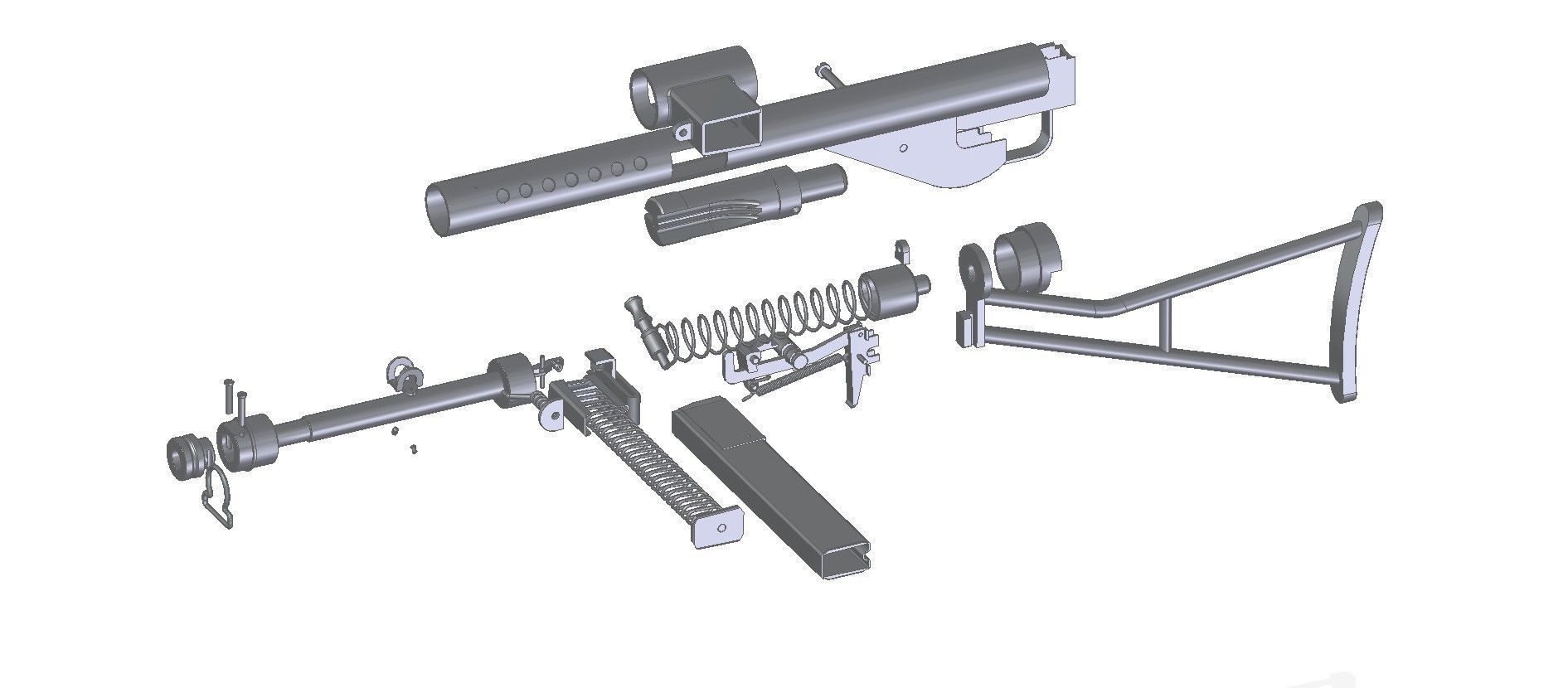
STEN MkI Star 3D model
Model maded using blueprints fully assembled, bullet maded using blueprints too and is also fully assembled.
This was the first simplification of the Mk I. The foregrip, the wooden furniture and the flash hider were removed for production expediency
The STEN (or Sten gun) was a family of British submachine guns chambered in 9×19mm and used extensively by British and Commonwealth forces throughout World War II and the Korean War. They had a simple design and very low production cost, so they were also effective insurgency weapons for resistance groups. STEN is an acronym, from the names of the weapon's chief designers, Major Reginald V. Shepherd and Harold Turpin, and EN for Enfield.Over four million Stens in various versions were made in the 1940s. The first ever Mk I Sten gun (number 'T-40/1' indicating its originator Harold Turpin, the year 1940 and the serial number 1) was handmade by Turpin at the Philco Radio works at Perivale, Middlesex during December 1940/January 1941. This particular weapon is held by the historical weapons collection of the British Army's Infantry and Small Arms School Corps in Warminster, Wiltshire. The first model had a wooden foregrip and forward handle (sometimes this was made of steel), as well for a section of the stock. The stock was a small tube outline, rather like the Mark II Canadian. One unique feature was that the front pistol grip could be rotated forward to make the firearm easier to stow. The barrel sleeve extended all the way to the end. Along the top of the tube surrounding the barrel was a line of small holes and its sights were configured somewhat differently. About 100,000 were made before production switched to the Mark II. Sten Mk I's in German possession were designated MP 748(e), the 'e' standing for englisch.















